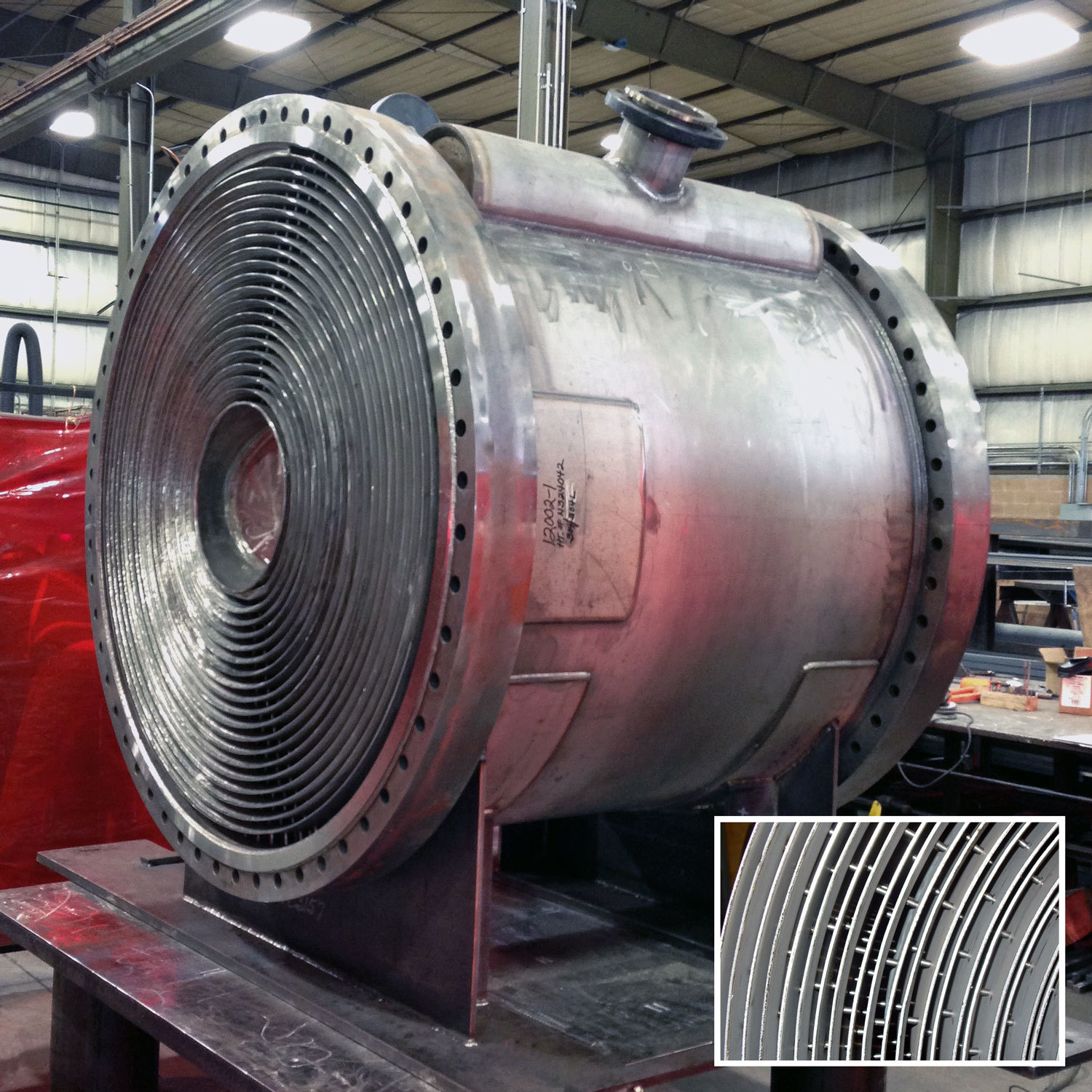Introduction
The evolution of spiral heat exchangers has been pivotal in advancing compact and efficient thermal management solutions across various industries. Originally developed to overcome limitations like fouling and inefficiency in traditional designs, spiral heat exchangers have become essential components in modern, space-conscious systems. Their unique spiral configuration enables high heat transfer efficiency within a compact footprint, making them ideal for applications where space, efficiency, and durability are paramount. From early uses in heavy industries to their current applications in energy, HVAC, and environmental management, spiral heat exchangers have adapted to meet the demands of evolving technologies and sustainability initiatives.
Enhanced Heat Transfer Efficiency: Spiral heat exchangers are designed with two coiled, spiral channels, which enhance the heat transfer rate by promoting continuous fluid contact and creating a high surface area within a compact volume. This design minimizes the space required for installation while maximizing thermal efficiency.
Resistance to Fouling: The spiral design helps maintain a consistent flow velocity, which reduces fouling and clogs within the exchanger. This feature is particularly beneficial in industries with fluids prone to contamination, such as wastewater treatment and chemical processing.
Compact and Flexible Design: Spiral heat exchangers are naturally compact and can be installed in limited spaces, making them suitable for both large industrial plants and small-scale facilities. Their design flexibility allows them to be tailored for different temperature and pressure requirements, enhancing their adaptability in various applications.
Improved Flow Distribution: The spiral structure ensures even distribution of flow and prevents dead zones, which can occur in traditional shell and tube exchangers. This uniform flow distribution not only optimizes heat transfer but also reduces maintenance needs over time.
Thermal and Mechanical Durability: Spiral heat exchangers are designed to handle high temperatures and pressures, often exceeding the capabilities of plate or shell and tube exchangers. This durability makes them a reliable choice for heavy-duty applications, including energy recovery systems, petrochemical processes, and HVAC.
Future of Spiral Heat Exchangers in Compact System Designs
The future of spiral heat exchangers is poised to bring transformative advancements to industries that require compact, efficient, and sustainable thermal management solutions. Known for their high efficiency and resistance to fouling, spiral heat exchangers have already established a strong presence in sectors such as chemical processing, wastewater treatment, and renewable energy. As technological innovation accelerates, these heat exchangers are evolving to meet the increasing demands for energy efficiency, sustainability, and adaptability. From incorporating smart technology for real-time monitoring to utilizing advanced materials for enhanced durability.
Increased Use of Smart Technology: Spiral heat exchangers are likely to incorporate more sensors and smart controls for real-time monitoring of temperature, flow rate, and pressure. This could enable predictive maintenance, optimize energy efficiency, and reduce downtime.
Advanced Materials for Better Performance: Future designs may utilize new, more sustainable materials that are corrosion-resistant, durable, and recyclable, enhancing environmental benefits while extending the lifespan of the exchangers.
Further Miniaturization and Compact Design :Ongoing advancements in compact engineering could lead to even smaller, more space-efficient spiral exchangers. This will make them ideal for applications with extreme space limitations, like micro-manufacturing and aerospace.
Improved Energy Recovery and Efficiency: Future models will likely focus on maximizing energy recovery, aligning with the trend of increased energy efficiency. This could make them more attractive for renewable energy and waste heat recovery applications.
Customization for Industry-Specific Needs: As industries seek more tailored solutions, spiral heat exchangers may be designed to meet the specific temperature and flow requirements of various sectors, from biopharmaceuticals to advanced electronics cooling.
Historical Development and Purpose
Modern Demand for Compactness: As industries push for more compact, efficient, and reliable systems, spiral heat exchangers have gained popularity. Their compact design allows for efficient use of plant space, critical in sectors with limited installation areas or mobile applications, such as marine and HVAC.
Origins and Initial Applications: Spiral heat exchangers were initially developed in the mid-20th century to address specific industrial challenges, particularly fouling and inefficiency in traditional heat exchangers. Early applications were focused on industries like oil refining and chemical processing, where fouling and space constraints were significant issues.
Design Advancements
Enhanced Self-Cleaning Mechanism: The unique flow path and pressure distribution also contribute to a self-cleaning effect, where fouling is naturally pushed out of the channels, reducing maintenance downtime.
Spiral Flow Paths: Unlike the straight channels in shell-and-tube designs, spiral heat exchangers feature coiled channels that guide fluid into a continuous, spiral flow path. This coiled design increases contact time between fluids, boosting thermal transfer efficiency in a smaller footprint.
Compact System Integration
Modular Design for Scalability: Spiral heat exchangers are often modular, meaning multiple units can be combined to meet larger capacity requirements without a massive increase in space. This modularity makes them adaptable for future expansion and scalability in facilities where energy needs fluctuate.
Space-Saving Benefits: Spiral heat exchangers are specifically designed for compact system integration. Their small footprint allows for easy placement in crowded or space-limited environments, such as offshore oil rigs or marine vessels.
Conclusion
the evolution of spiral heat exchangers has marked a significant advancement in the realm of compact and efficient thermal solutions. Their unique design, which optimizes space while enhancing heat transfer efficiency, has made them invaluable in a wide range of industries—from chemical processing and wastewater treatment to renewable energy and HVAC systems. As industries continue to seek solutions that are both space-efficient and energy-conscious, spiral heat exchangers are set to play an even more integral role. Future innovations in materials, smart technology integration, and design adaptability will further enhance their performance, making them a key component in sustainable and compact system designs for years to come.

